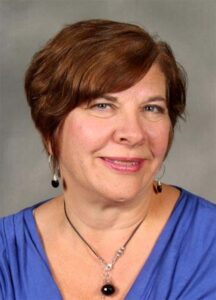Oswego County Opportunities executive director on how her agency is fighting poverty in Oswego County
By Mary Beth Roach
Q: Can you give our readers an overview of what your agency does?
A: We are what we call an anti-poverty or community action agency. We were born out of [former President] Johnson’s War on Poverty to address, at the local level, the impact poverty was having on the local community and its members. Poverty has all sorts of faces to it. People can be impoverished in their ability to access health care; impoverished in lacking education, housing, social, emotional support, positive role models. When the agency was formed, we saw poverty as being more than just working with people who lacked income, but who lacked resources in a lot of different areas.

As a result, OCO provides access and support to resources that people may lack. We provide health care. We have reproductive healthcare services and community health services to help link people to health care through insurance navigators, through cancer services. We help people who lack resources in transportation. We have educational services for preschool to adults to help people develop skills, educational skills, readiness skills to get into school and be successful; while they’re in school helping to support them through after-school programs; and then to adult education and services as well as job training and education and support. We also provide crisis, housing and case management services. A very wide variety that really is focused on helping people to address their immediate needs and then longer-term needs to help lead a more self-sufficient and self-reliant life.
Q: What is number of employees that you have?
A: If we were fully staffed, we would be at about 640 employees, but COVID-19 has definitely hurt us there. So we’re right now, about 550.
Q: How do you, as executive director, oversee such a large organization?
A: By having good people in place all over the organization who are really committed to the mission and who care. Hiring that type of a person is so important to assure that the mission is continuing. We also have lots of systems in place for reporting, evaluating and making sure that we are being good stewards of that money we receive to provide those services, that we’re using that money in the way in which it’s intended to and that we’re achieving the outcomes and achieving the activities that we’re required to do.
Q: How are you funded?
A: We are funded through a variety of local, state and federal grants and contracts. About 50% of our funding comes from grants, that we have to demonstrate the need in Oswego County and then hopefully, do a good job in demonstrating that need and telling what we’re going to be doing with the funding, if awarded. Then we have contracts in place with the state, and sometimes local government, to provide and deliver a particular service. Out of that $35 million annual budget, we’re infusing about $32 million to $33 million of state and federal or other resources into Oswego County to deliver the services that we provide. I’d say close to the $32 million. Back when OCO was first formed [in 1966], it didn’t want to be a drain on the local community resources but to be a conduit to bring those resources into help this community and I think that we have stayed really true to that practice of our founders. We’re helping to bring resources into the community to address local community needs as much as possible and not be a drain on the local county tax base.
Q: What is the biggest challenge you’re facing now and how are you meeting it?
A: COVID-19, but I think we’re meeting it very well, moving from the state of crisis two years ago to now. The norm is we’re delivering some services virtually and some in person, creating hybrid services and creating those for our staff as well. With crisis comes opportunity, and I think, with COVID-19, we’ve had an opportunity to be able to flex and develop in a way that we didn’t think we could do before. It’s still an ongoing challenge, trying to keep people well, keep people working. We run many residential programs that operate 24 hours, seven days a week, and we can’t close the doors when people get sick. Those residential programs are really challenged with getting enough coverage to take care of some of our community’s most vulnerable people and keeping them safe. Bless those staff who worked inordinate amount of hours trying to keep their residents safe.
From a service component need, affordable housing. Our homeless population is homeless because they can’t afford the cost of rent. It’s not that that they’re not working or trying. When you’re paying 50% of your income toward your housing costs, that’s a losing battle. Affordable, decent, safe housing is critical. Transportation: a lot of lower-income individuals can’t afford a car, or a car they can afford falls apart all the time. Getting around and having reliable transportation to get to a job or to maintain that job is difficult.
Q: What do you consider your biggest accomplishment as the executive director?
A: My accomplishments are my employees’ accomplishments. Everything that we do is because of our employees and the work that they’re doing day in and day out to make things happen, to serve those 15,000 people who have better outcomes and better lives as a result of touching OCO. One is leading through COVID-19 and helping people to feel that we got their back, both client and staff. But I didn’t do that alone. That took a lot of people.
The second is being able to provide and partner with a housing development company out of Rochester, to be able to build affordable housing units in Oswego County. We were able to bring 60 units online, Champlain Commons in Scriba. We’re partnering with another developer on a similar project in Pulaski called Selkirk Landing. [The agency is anticipating it’ll begin renting in late spring.]
Q: What do you see for the future of the organization?
A: There’s a lot changing in the landscape in terms of how services get delivered, whether that be healthcare, social services. In terms of our future, it’s being on the forefront of those changes. It’s really about ensuring better coordination and collaboration. I see strengthening our collaboration, strengthening our collaborations around housing, and ensuring we’re being flexible and creative in our solutions for helping people in this community change their lives.

